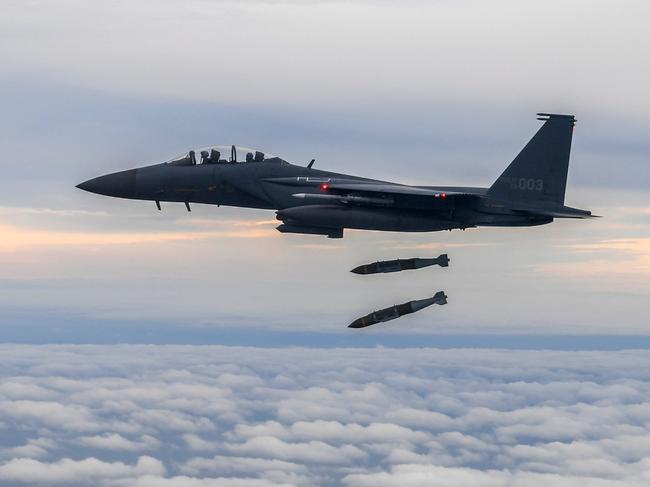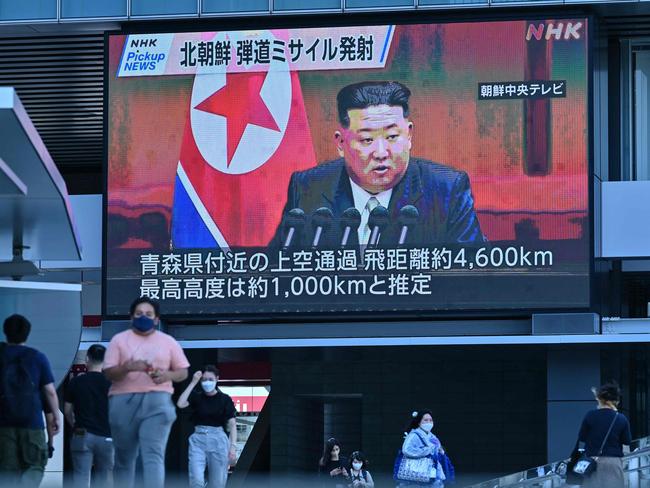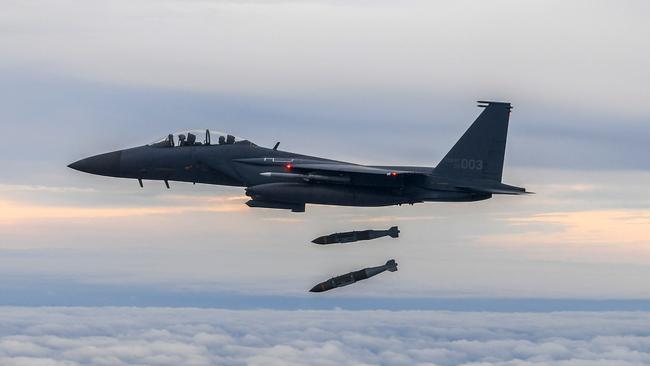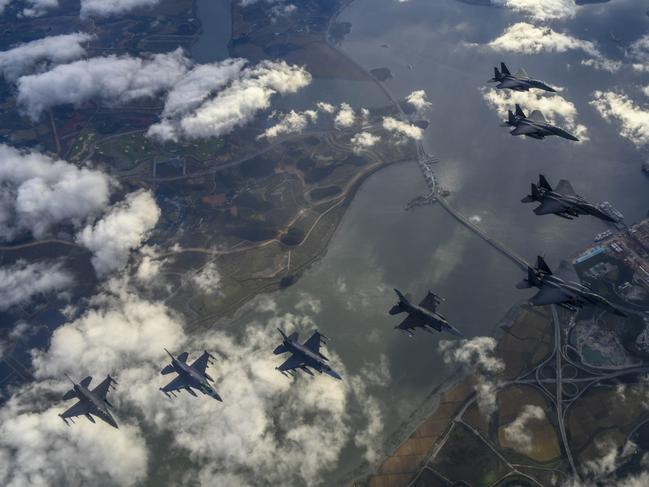Japan issued a rare warning to seek shelter after North Korea fires missile over country
Japan, the US, and South Korea scrambled fighter jets over the Yellow Sea after North Korea fired a ballistic missile over the island nation for the first time in five years.

World
Don't miss out on the headlines from World. Followed categories will be added to My News.
Japan issued a rare warning for the country to take shelter as North Korea fired a ballistic missile over the country for the first time in five years.
The United States and South Korea joined Japan in scrambling fighter jets and military planes in joint drills in response.
The intermediate-range ballistic missile (IRBM) flew about 4,500 kilometres in a possible new record for the regimen of Kim Jong-un, according to South Korea.
It was Pyongyang’s fifth missile launch in 10 days and the first to directly fly over Japan since 2017, when the North Korean leader was trading insults with then US president Donald Trump.

Japan activated its missile warning system urging people in two northern regions to take shelter early Tuesday local time.
Japanese Prime Minister Fumio Kishida said it was an “act of violence” for Pyongyang to launch the missile. Defence Minister Yasukazu Hamada said it could have been the same Hwasong-12 missile used the previous two times North Korea launched over the country.
South Korean and US fighter jets carried out a “precision bombing drill” in response, Seoul’s military said, with South Korean F-15Ks dropping joint direct attack munitions (JDAMs) at a target in the Yellow Sea.
The drills aimed to demonstrate the allies’ “capabilities to conduct a precision strike at the origin of provocations”, South Korea’s Joint Chiefs of Staff said in a statement.


On the same day, eight Japanese and four US fighter jets carried out a joint drill in airspace west of the country’s Kyushu region, according to Japan’s Joint Staff.
The missiles “put South Korea, Japan, and Guam within range”, and show that Pyongyang could hit US bases with nukes if war broke out on the Korean peninsula, Park Won-gon, professor of North Korean Studies at Ewha University in Seoul, told AFP.
“As these are missiles that can carry nuclear warheads, the launch also has a political goal of once again declaring North Korea a de facto nuclear power and showing its complete denuclearisation is impossible,” Park added.
The US State Department said the “reckless and dangerous launch” posed “an unacceptable threat to the Japanese public”.
Seoul, Tokyo and Washington have been ramping up joint military drills to counter Pyongyang’s growing threats, staging the first trilateral anti-submarine drills in five years on Friday.
That came just days after the US and South Korean navies conducted large-scale exercises.
Such drills infuriate North Korea, which sees them as rehearsals for an invasion.
US Vice President Kamala Harris visited Seoul last week and toured the heavily fortified Demilitarised Zone that divides the Korean peninsula, on a trip to underscore her country’s “iron-clad” commitment to South Korea’s defence.
About 28,500 US troops are stationed in South Korea to help protect it from the North.

With AFP





